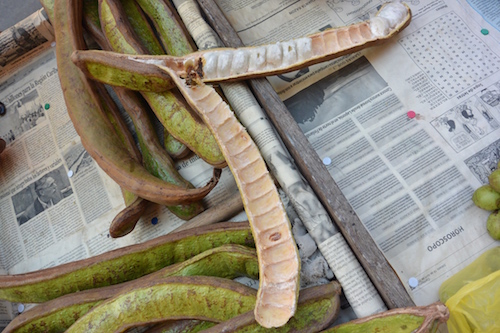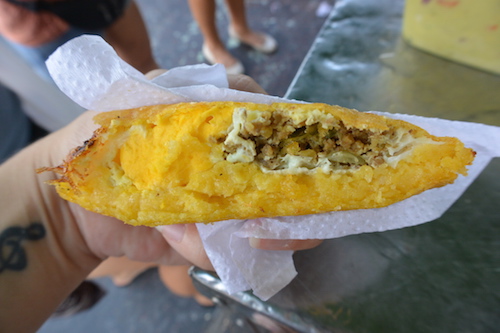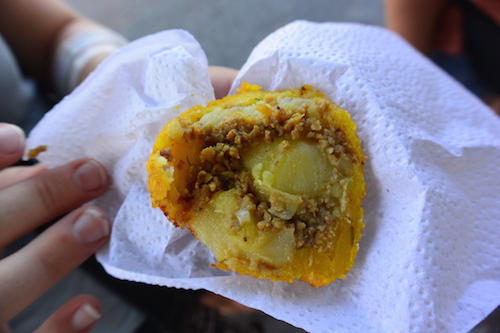Cartagena: A Street Food Lover’s Paradise
Photos by Annie MerkleyCartagena, Colombia is a seductive city that puts your senses into overdrive. The stunning colonial city is a Caribbean fantasy come to fruition. The brightly painted Spanish architecture encompasses color from all over the spectrum. Salsa music spills out of local hole-in-the-wall joints and hangs in the hot and humid air, embracing and enticing you. The luscious smell of food comes in intoxicating waves as you walk the streets of Old Town.
A friend recommended that we do a street food tour as a way to get to know this enchanted land. It wound up being the most informative and tastiest tour I’ve ever experienced. We met at a square in the center of town, once frequented by author Gabriel García Márquez to people-watch, ponder, and write love letters.
Tour guide Kristy Ellis greeted us with a cheery smile and endearing Australian accent. We were joined by one more gal, making the tour-goers an intimate group of three. It felt like we were friends hanging out and talking about Cartagena. When Ellis first came to Cartagena a handful of years ago, she discovered that there weren’t any food-based tours. She started working as guide for a walking historical tour, and began researching for her food tour by trying everything the streets had to offer.
Ellis said that she likes to show everyday life of Cartagena on her tour. “The way I love to connect to a place and to the people is through food. I love to go to the markets, I love to ask the taxi driver where they last ate and go there.”
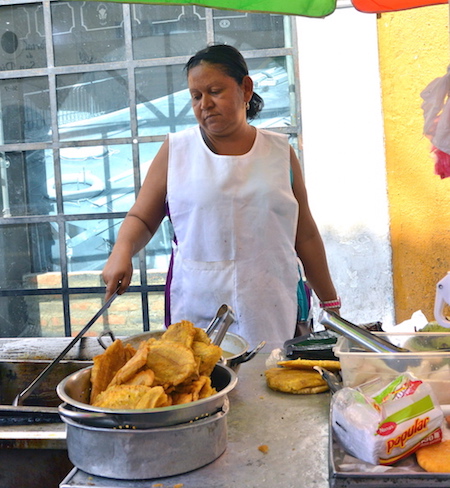
We departed the square to our first tasting, a stand selling patacones con queso costeño—smashed and fried plantains paired with soft and salty costeño cheese. The crunch of the plantains against the delicate cheese was the perfect opener for the traditional Colombian Caribbean cuisine extravaganza we were embarking upon.
A cart serendipitously wheeled past, making mango biche was our next stop. Ellis, a connoisseur of going with the flow, was elated to introduce us to this dish of unripe mango sliced like French fries and marinated in fresh lime juice and seasonings. Embodying sweet, tart and savory, mango biche serenades the mouth with bright and fresh flavor. The simple preparation was served in a small plastic bag.
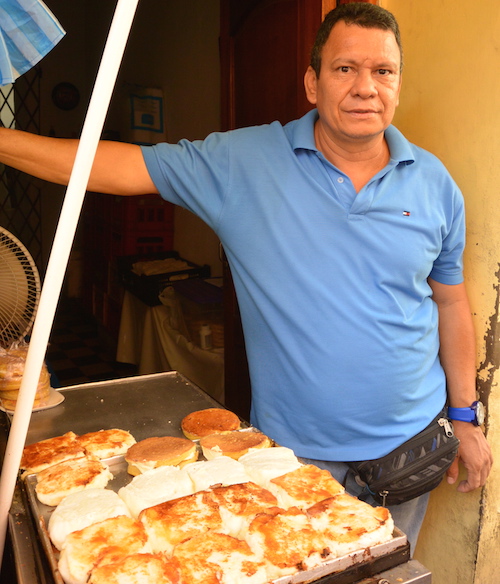
We walked a few more steps to a man selling the hugely popular street fare of arepas. Arepas are everywhere in Colombia, as prevalent as hot dogs at a baseball game. The ground corn flatbread is grilled on flattops with butter and is most commonly stuffed with cheese, but can be filled with whatever floats your boat. This stand was particularly special to Ellis, as this was one of the first places she frequented as she began to “eat her way through Cartagena.”
Partaking in two kinds of arepas con queso, we first tasted the more classic take made with ground, dried corn harmonizing with cheesy, buttery elements. Arepa de choclo con queso was next. Made from giant Andean sweet white corn kernels, it had a much fluffier consistency and had notes of condensed milk and honey.
We continued around the corner and down the street, passing brilliant flowers cascading off balconies. With every step Ellis chatted about this magical city. Her eyes lit up with a look of someone in love.
-

-

-

-

-

-

-

-

-

-

-

-

-

-

-

-

-

-

-

-

-

-

-

-

-

-

-

-

-

-

-

-

-

-

-

-

-

-

-

-

